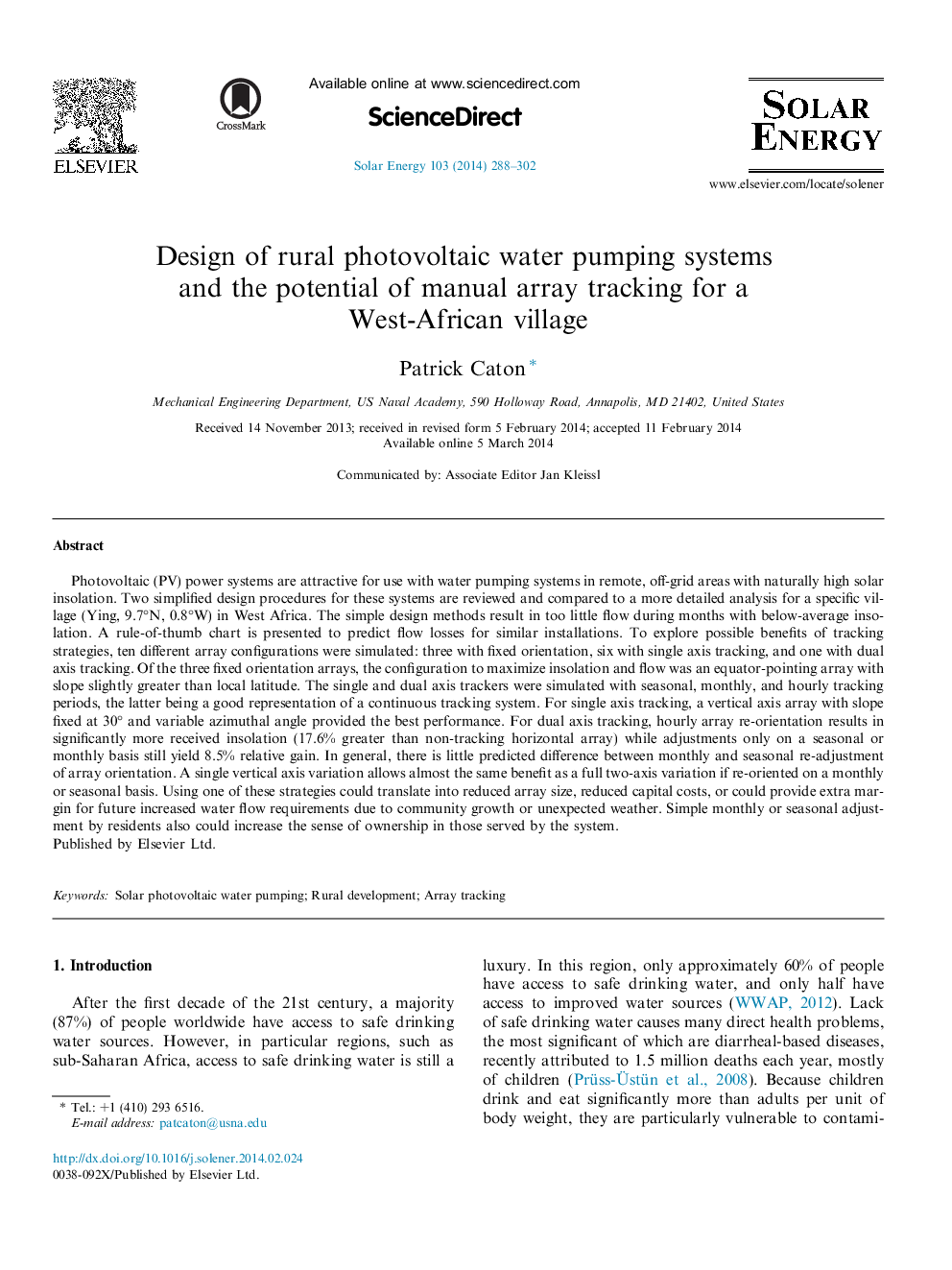| کد مقاله | کد نشریه | سال انتشار | مقاله انگلیسی | نسخه تمام متن |
|---|---|---|---|---|
| 7938336 | 1513115 | 2014 | 15 صفحه PDF | دانلود رایگان |
عنوان انگلیسی مقاله ISI
Design of rural photovoltaic water pumping systems and the potential of manual array tracking for a West-African village
ترجمه فارسی عنوان
طراحی سیستم های پمپاژ آب فتوولتائیک روستایی و توانایی ردیابی آرایه دستی برای روستای غرب آفریقایی
دانلود مقاله + سفارش ترجمه
دانلود مقاله ISI انگلیسی
رایگان برای ایرانیان
کلمات کلیدی
پمپ آب فتوولتائیک خورشیدی، توسعه روستایی، ردیابی آرایه،
موضوعات مرتبط
مهندسی و علوم پایه
مهندسی انرژی
انرژی های تجدید پذیر، توسعه پایدار و محیط زیست
چکیده انگلیسی
Photovoltaic (PV) power systems are attractive for use with water pumping systems in remote, off-grid areas with naturally high solar insolation. Two simplified design procedures for these systems are reviewed and compared to a more detailed analysis for a specific village (Ying, 9.7°N, 0.8°W) in West Africa. The simple design methods result in too little flow during months with below-average insolation. A rule-of-thumb chart is presented to predict flow losses for similar installations. To explore possible benefits of tracking strategies, ten different array configurations were simulated: three with fixed orientation, six with single axis tracking, and one with dual axis tracking. Of the three fixed orientation arrays, the configuration to maximize insolation and flow was an equator-pointing array with slope slightly greater than local latitude. The single and dual axis trackers were simulated with seasonal, monthly, and hourly tracking periods, the latter being a good representation of a continuous tracking system. For single axis tracking, a vertical axis array with slope fixed at 30° and variable azimuthal angle provided the best performance. For dual axis tracking, hourly array re-orientation results in significantly more received insolation (17.6% greater than non-tracking horizontal array) while adjustments only on a seasonal or monthly basis still yield 8.5% relative gain. In general, there is little predicted difference between monthly and seasonal re-adjustment of array orientation. A single vertical axis variation allows almost the same benefit as a full two-axis variation if re-oriented on a monthly or seasonal basis. Using one of these strategies could translate into reduced array size, reduced capital costs, or could provide extra margin for future increased water flow requirements due to community growth or unexpected weather. Simple monthly or seasonal adjustment by residents also could increase the sense of ownership in those served by the system.
ناشر
Database: Elsevier - ScienceDirect (ساینس دایرکت)
Journal: Solar Energy - Volume 103, May 2014, Pages 288-302
Journal: Solar Energy - Volume 103, May 2014, Pages 288-302
نویسندگان
Patrick Caton,
